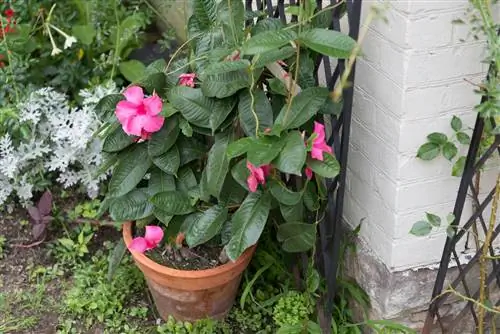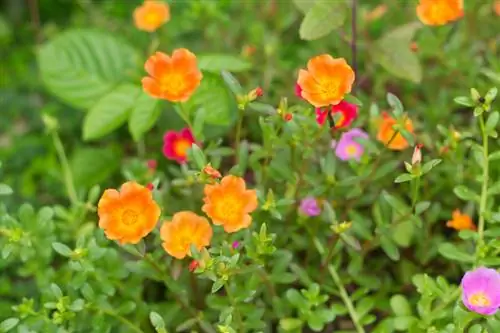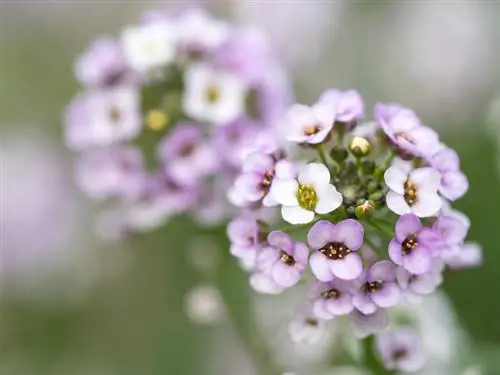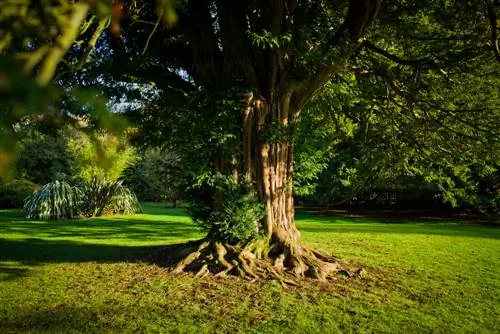- Author admin [email protected].
- Public 2023-12-16 16:46.
- Last modified 2025-01-23 11:22.
It is considered an undemanding and robust permanent bloomer. Dipladenia, which comes from South America, owes this primarily to its roots. But what makes them so special? Read all about their properties and benefits below.

What property makes the roots of Dipladenia so special?
The special thing about the roots of Dipladenia is theirability to store water. They are tuberous storage roots that contain a lot of starch and water. With them, the Dipladenia can even survive longer dry periods without damage.
What kind of roots does Dipladenia have?
The Dipladenia hasturnip-shaped tuberous roots These are so-called storage roots. This is followed by finer roots. The brownish storage roots are visually reminiscent of a mixture of potatoes and carrots. They contain a lot of juice, which is made up of water, starch and other nutrients.
What advantage does Dipladenia have thanks to its roots?
Thanks to its rootsthis dog poison plant only needslittle waterThe roots can store a lot of water, so the plant alsodry periodsmostly undamagedsurvivesThe Dipladenia can even tolerate several days in the summer in a sunny location in the heat without watering. Nevertheless, the root ball of Dipladenia should never dry out completely.
What can the roots of Dipladenia not tolerate?
The roots of Dipladenia cannot tolerateWaterloggingThey need air and therefore a loose, permeable substrate. The irrigation water must be able to flow away unhindered and must not accumulate in the planter, for example. Otherwise rot can occur and the Dipladenia will no longer bloom and slowly die. It is enough to water them once a week.
How do Dipladenia cuttings best form roots?
To improve the rooting of dipladenia cuttings, they should be dipped in arooting powderorwillow water. In general, cuttings of Dipladenia, also known as Mandevilla, root rather poorly. It is therefore advisable to stimulate rooting when propagating through cuttings. It is also important to pay attention to the following points:
- Cut 10 cm long cuttings
- put in potting soil
- cover with a plastic cap
- alternatively use a mini greenhouse
- Rooting is best at 25 °C
When does it make sense to cut the roots of Dipladenia?
If the roots of the Dipladenia already protrudethrough the drainage holesof the pot, but the plant shouldnot be repotted into a new container, The roots should be cut back. To do this, take the root ball out of the pot, carefully remove the soil and cut off the root tips. The root ball can then be put back into the pot and filled with fresh soil.
Tip
Too much water reduces flowering
If the Dipladenia is watered too much and the roots are constantly exposed to moisture, they put their strength primarily into the shoots. This means that fewer flowers are produced. It therefore makes sense to water the Dipladenia sparingly and to allow the soil surface to dry.






